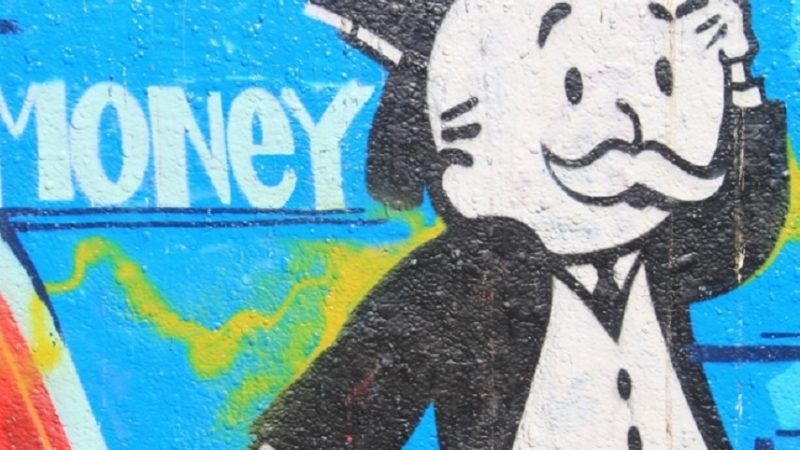This Column Will Pay For Itself!
The notion that a dollar of government spending can yield more than a dollar in savings, "paying for itself," is absurd.

The Dutch love their bicycles, if we are to believe what we read in The New York Times. A quarter of all trips are made by bicycle, the paper reports, "and the federal government has been building up the country's bike infrastructure over the last decade."
This is very nice, but also: So what?
Here's what: "The yearly investment of roughly 500 million euros, or about $600 million, pays for itself, proponents say, by reducing health, social and other costs."
Mirabile dictu! A $600 million expenditure that doesn't cost a thing. If only America could import this magical method of financing government initiatives!
Apparently it can. According to the Center for Immigration Studies, President Donald Trump's border wall needs to stop as little as 9 percent of illegal immigrants to pay for itself. How? Ostensibly, it will save government expenditures on education, welfare, and things such as "police, fire, highways, parks, and similar services."
Hmmmm. It makes sense to say adding unlawful border-crossers could impose higher costs on the public schools. But it's laughable to claim America will have to build more highways because of them. And when is the last time your local government representatives said they had to raise your taxes because the parks are overrun with illegal immigrants?
Then there's "similar services" — a phrase that, like "social and other costs," does much work without saying much at all. It's the kind of vague terminology you're supposed to skim over without further thought.
You know what else supposedly would pay for itself? An $8 billion government program to provide child care in Canada. And how would it do that? Well, Canada has about 150,000 stay-at-home moms, and if every one entered the workforce, that would boost Canada's GDP about 2 percent, which would generate $8 billion in taxes. Ta-da!
Economic growth is not good just for child care. It's a miracle elixir that makes many proposals pay for themselves.
When he pitched Trump's tax-cutting proposal, for instance, Treasury Secretary Steven Mnuchin promised that "the plan will pay for itself with growth." Economists chortled.
It's the same story for a proposed $73 million baseball stadium for the Pawtucket, R.I., Red Sox. Rhode Island Public Radio reports that "supporters say the stadium would spur additional development in Pawtucket and more than pay for itself over 30 years."
The same apparently goes for, yes, a lacrosse stadium in the Ohio village of Obetz (pop. 4,500). The Columbus Dispatch notes that village administrator Rod Davisson expects "the facility will essentially pay for itself by generating its own revenue, attracting business, creating jobs and increasing the community's overall value and appeal."
Sure it will. They said the same thing about the new stadium for the Braves in Gwinnett, Georgia: "Commissioners assured residents the stadium would pay for itself and spark economic development nearby," the Atlanta Journal-Constitution noted five years ago. But "the county is still struggling to find money to pay the stadium debt." In an update this January, the paper wrote that the county is refinancing the debt, which it hopes will allow it to end the practice of diverting "hundreds of thousands of dollars in hotel-motel tax money to help cover payments."
In fact, just about every new stadium financed with public funds is justified on the grounds that it will pay for itself through spin-off development and, um, social and other benefits. In just about every case, it's bunk.
High-cost early childhood education? That will earn you a return of 13 percent a year and therefore "beats the stock market hands-down," according to NPR. Likewise, a study several years ago purported to show that an $847 million "investment" in pre-K in Virginia would pay for itself in 11 years. Why, with those kinds of return, you can't afford not to invest.
A $2.5 billion waterfront trolley system in New York City? It will pay for itself, Mayor Bill DeBlasio claims, through new development and higher real estate values. More subsidies for the visual-effects industry in L.A.? That, too, will pay for itself, claims Los Angeles mayor Eric Garcetti.
Granted, the pays-for-itself claim can have a rational basis. Spending money to fix roads might, indeed, reduce vehicle repair costs, to cite just one example. Anti-smoking campaigns can prevent health-care spending that could be needed otherwise. And it would be absurd to suggest that America would be better off if the country spent zero dollars on educating the young. But the claim that every dollar spent saves more than a dollar elsewhere is equally absurd. Were that so, then a government that spent 100 percent of GDP would not have to spend anything at all.
In some cases, it might be true that spending money actually saves money. But in all of them?
This column originally appeared at the Richmond Times-Dispatch.


Show Comments (53)